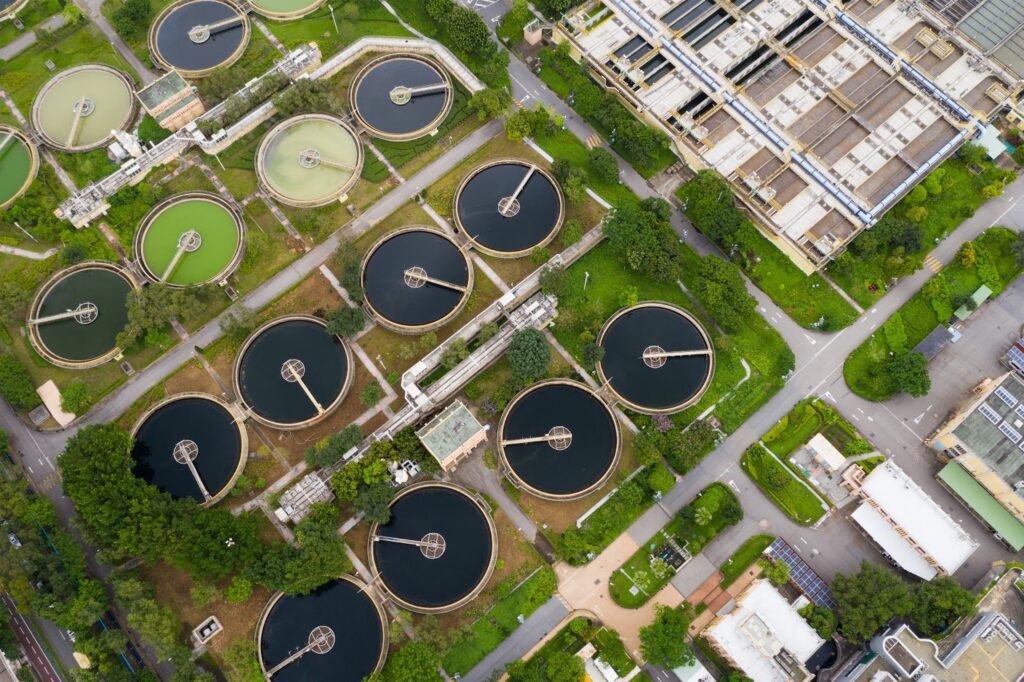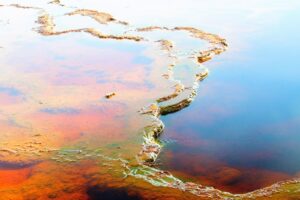What Is Ozone Water Treatment for Industrial Wastewater?
May 21, 2025

The ozone layer is a natural phenomenon that forms a protective barrier around the earth's stratosphere. It absorbs the Sun’s UV rays, protecting earth from harmful radiation. Ozone also plays a role in treating wastewater, specifically through ozone water treatment.
But how does this actually work? And is it effective?
What Is Ozone Water Treatment?
Ozone water treatment is a water purification method that uses ozone gas (O3) to detoxify water. Known for its powerful oxidation abilities, ozone reacts with organic and inorganic contaminants. This effectively breaks them down into less harmful substances.
The process falls under the category of advanced oxidation processes (AOPs), which are widely used in modern industrial wastewater treatment. Unlike traditional methods that rely on chemicals like chlorine, ozone treatment is more environmentally friendly.
Also known as ozonation, the process involves producing ozone with an ozone generator. It is then infused with water, where the ozone targets contaminants. This includes bacteria, viruses, waterborne pathogens, chemical pollutants, unwanted odours and anything in between.
How Does Ozone Water Treatment Work?
Ozone is a molecule made up of three oxygen atoms (O3), whereas regular oxygen consists of two oxygen atoms (O2). Ozone is created out of oxygen, usually by passing dry air or pure oxygen through a high-voltage ozone generator.
The process splits O2 molecules into individual oxygen atoms. It then recombines with other O2 molecules to form ozone (O3). In industrial wastewater treatment, the ozone gas is injected into the contaminated water, turning into hydroxyl radicals.
This oxidising agent treats water by breaking down contaminants and pollutants.
Advantages of Using Ozone for Wastewater Treatment
- Disinfectant: Ozone is an effective oxidizer that instantly neutralises contaminants. It has stronger properties than chlorine, and can even eliminate stubborn metals from water. It is also effective over a wide range of PH including acidic water.
Besides that, it can oxidise a wide range of organic compounds like industrial solvents and chemical oxygen demand (COD)-causing agents.
- Eco-Friendly: Ozone is chemical free, making it eco-friendly. It doesn’t leave behind harmful residues or generate disinfection byproducts (DBPs) like chlorine-based treatments often do.
Ozone naturally decomposes back into oxygen (O2), leaving no trace in the water. - Speed: Ozone reacts incredibly quickly. It takes mere seconds for the molecules to oxidise pollutants. This high reactivity allows for shorter contact times, making it highly efficient for industrial applications.
Disadvantages of Using Ozone for Wastewater Treatment
- Cost: Generating ozone is more expensive than regular water treatment methods. Everything from the ozone generator, energy consumption to ongoing system maintenance can add up.
- Short Half-Life: Ozone can be hard to transport due to their short half-life. This means they can easily turn back into oxygen after dissolving in water. Ozone is generated for immediate use only, so everything has to be done on site.
- Potential Safety Risks: Ozone is hazardous at high concentrations. Exposure to ozone gas can cause a wide range of health issues, especially in enclosed or poorly ventilated areas. To break down excess gas safely, ozone water treatment systems require a proper set up.
Ozone Water Treatment vs Chlorination
Ozone water treatment and chlorination are both used to disinfect industrial wastewater. Nonetheless, they do have differences that set them apart. Ozone is a much stronger oxidiser than chlorine, as it can eliminate a wide range of contaminants.
It also acts quickly and leaves no harmful byproducts, making it more eco-friendly. With that said, ozone does have its drawbacks—it has a short half-life, meaning it can only be generated on site.
Creating ozone is also inexpensive, requiring high-energy equipment and regular maintenance. On the other hand, chlorination is more cost-effective and widely used due to its simplicity. It even has the ability to leave a residual disinfectant in water, preventing recontamination.
However, chlorine reacts with organic matter to form harmful disinfection byproducts (DBPs). This can pose both environmental and health risks if not managed properly. While both methods are effective, the choice between ozone and chlorine depends on your goals.
Conclusion
Ozone water treatment is an effective wastewater treatment method that may, or may not, be suitable for your application. Remember to assess your needs and goals before choosing this method, or any other.
Contact us to find out more!
 GreenTec Energy Pte Ltd (GTE) is a waste management company located in Tuas, Singapore.
GreenTec Energy Pte Ltd (GTE) is a waste management company located in Tuas, Singapore.
Our service includes Industrial waste, Oily waste, Marine waste.
To provide a hassle free solution to our customer is always the key approach and to ensure a win-win situation towards. As a NEA approved environmental company in Singapore, we take all our services seriously and to ensure maximum safety with compliances applied. Every step of our disposal processes are also designed to meet NEA & SCDF requirements, with latest treatment facilities and laboratories to test and treat all incoming waste before disposal.
GTE operates a total land area of about 100,000sqft at 14 Tuas South Street 12 Singapore 636953. With our comprehensive logistics and transportation fleet, we provide prompt and efficient services in transportation of waste to our premises.



